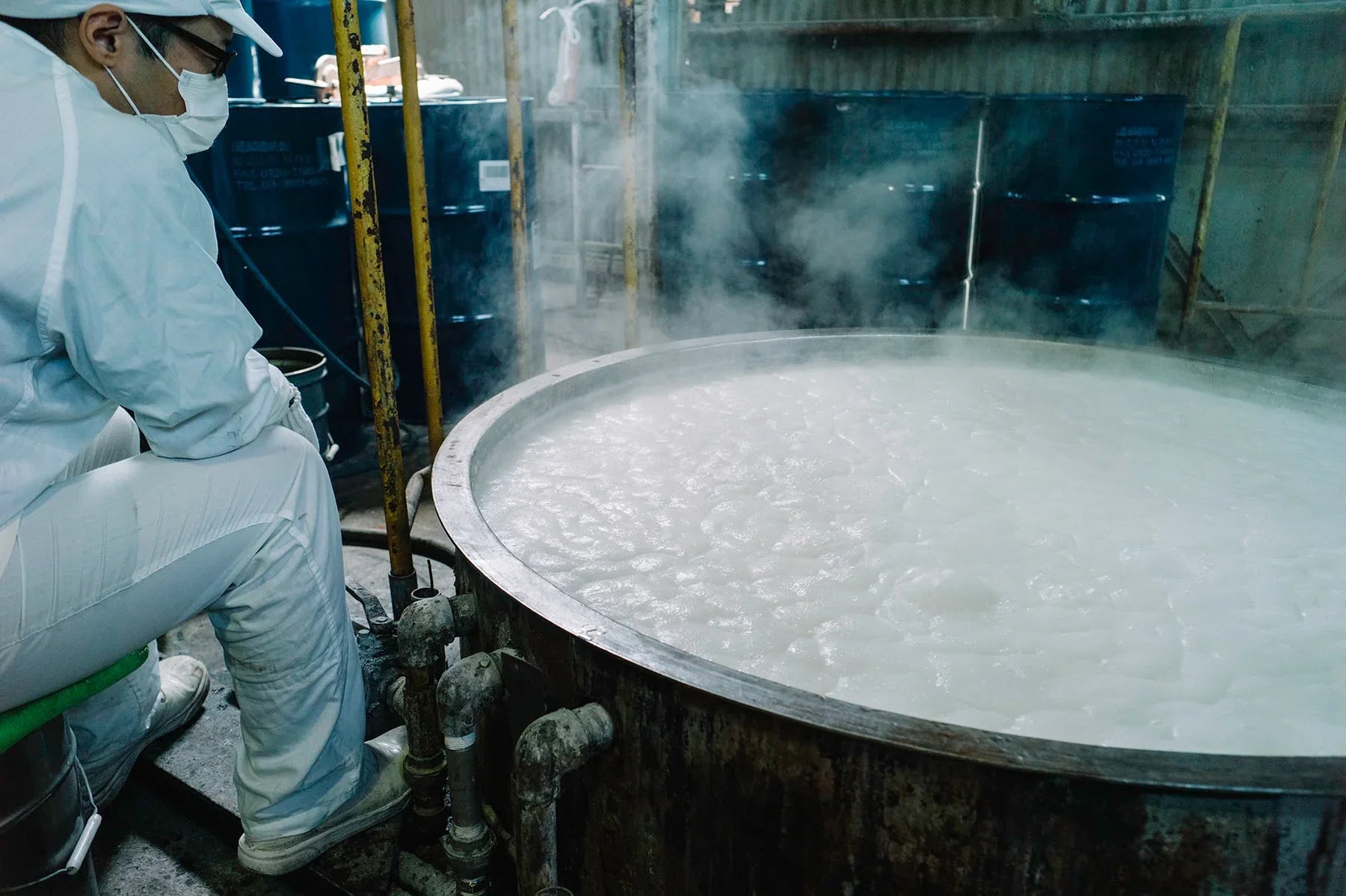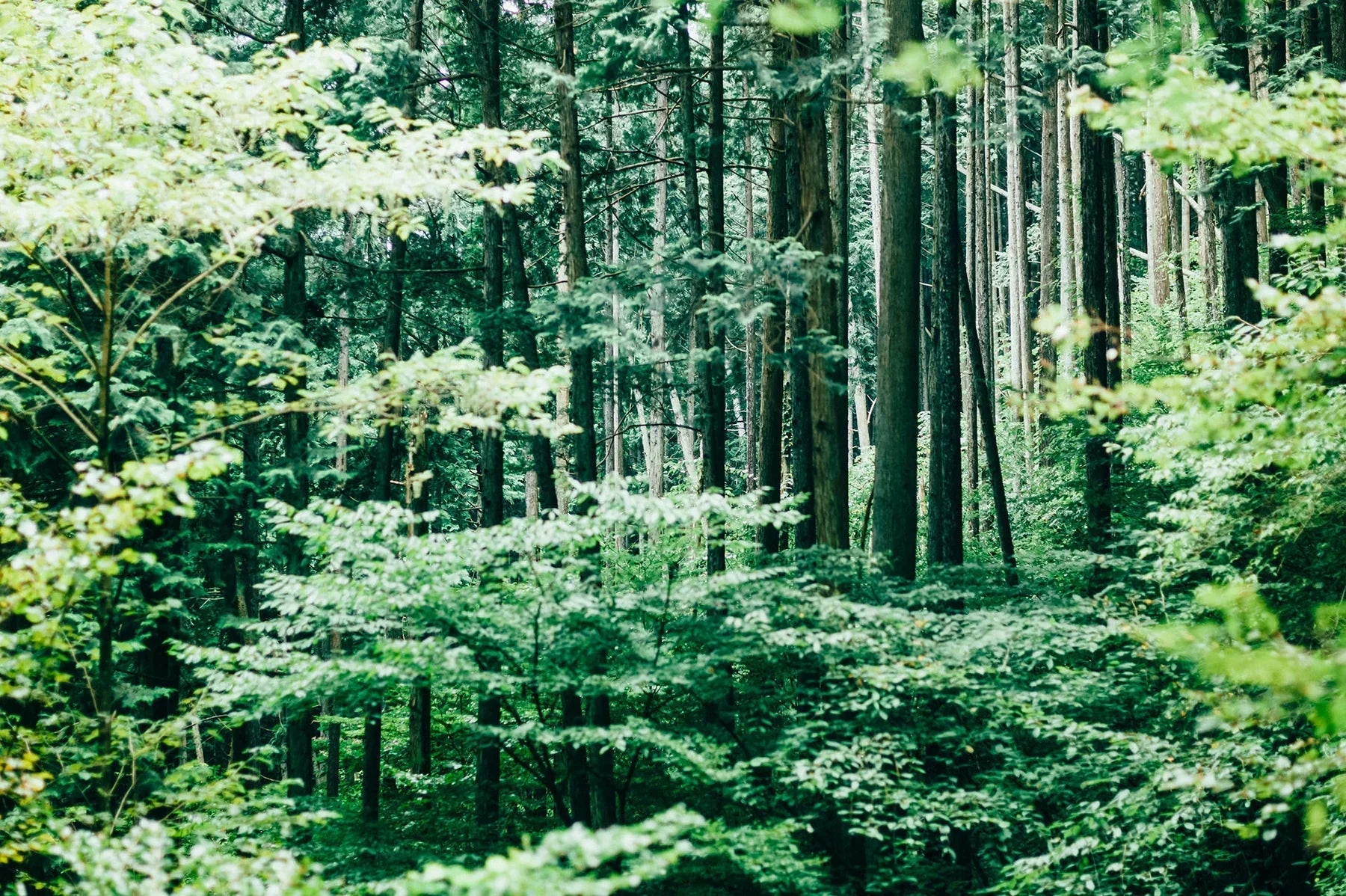
Laundry detergent made using the traditional kettle cooking method
When buying laundry detergent or fabric softener, what should you look for to make the best choice?
If you focus only on strong stain removal, environmental impact may be overlooked—and the same is true if you focus solely on eco-friendliness. Price is another important factor, and every product inevitably has its pros and cons.

Our goal with this laundry detergent was to create an all-around product in every respect - performance, price, and environmental friendliness.
Development of the Standard Products laundry detergent was carried out by a long-established soap manufacturer.
At first, the combination of soap and laundry detergent might sound unusual. However, this manufacturer is an expert in stain removal, with experience developing a wide range of products, from hand soaps to commercial detergents and household cleaning goods.
The key feature of this laundry detergent is that it contains pure soap made using the traditional kettle-boiling method.

Using pure soap as laundry detergent can improve the wash result, feel and absorbency of clothes compared to regular synthetic detergents.
Synthetic detergents designed purely for dirt removal often have very strong cleaning power—which can be both good and bad. The downside is that they may strip away the natural oils and fats found in fabric.
Pure soap, by contrast, does not damage the texture of the fabric and leaves behind plant-derived fatty acids as natural oils, which are safe to use on the skin.
From an environmental standpoint, soap is naturally biodegradable. When released into rivers or oceans, it breaks down over time, and the remaining surfactants eventually become food for aquatic organisms.

While pure soap seems to have only advantages, it does have one disadvantage: you need to use more of it than with regular synthetic detergents.
Pure soap does not have a strong cleaning power, so you have to use a lot of it. This means that a lot of soap will remain undissolved in winter, which can cause stains on clothes and the washing machine drum.
In short, both pure soap and synthetic detergents have their strengths and weaknesses, depending on how you look at them.
That’s why we aimed to create a detergent that was neither purely soap nor purely synthetic, but one that combined the best qualities of both.
By combining the cleaning power and foaming properties of each product, you can reduce the amount of laundry detergent you use. Furthermore, we have succeeded in keeping the cost of the product itself relatively low while also taking into consideration the reduction of environmental impact. Most importantly, the cleaning power remains strong—something we take pride in.
With all of this in mind, we believe we have developed a laundry detergent that can truly be called an all-rounder.

To complement our laundry detergent, we also recommend the fabric softener from the same series.
The main role of fabric softener, as its name suggests, is to soften clothes. Yet somewhere along the way, many products on the market shifted their focus to “adding fragrance” rather than prioritising softness.
Of course, while scent is important, we chose to go back to basics—developing a fabric softener with the goal of helping clothes last longer.
Our natural fabric softener uses plant-derived surfactants and gives clothes a fluffy finish.

The result is a product line available in three gentle fragrances:
- Lily of the Valley & Violets
- Wild Grass & Flower Soap
- Forest & Citrus
Each is available in both 400mL and 1,000mL sizes, with a total of 12 products across the laundry detergent and fabric softener range.
Alongside the classic floral and soapy scents, we also offer woody fragrances. These are still quite rare in fabric softeners, so we encourage you to visit our store and experience them for yourself.


LATEST STORY

Laundry detergent made using the traditional kettle cooking method
This laundry detergent is made with pure soap, paired with a fabric softener that leaves a natural finish. Our goal was to create a product that strikes the right balance—easy to use, environmental...
Read more
Tenugui dyed using a technique unique to Japan
Sakai City, Osaka Prefecture, is a major production area for tenugui. Takeno Senko is the only company that can make double-sided roll-printed tenugui. Craftsmen carefully dye the textured Japanese...
Read more
Miscellaneous goods made from domestic wood and thinned wood
What image comes to your mind when you hear the word "deforestation"? While often associated with environmental loss, in Japan, sustainable forestry involves the careful use of thinned wood to main...
Read more